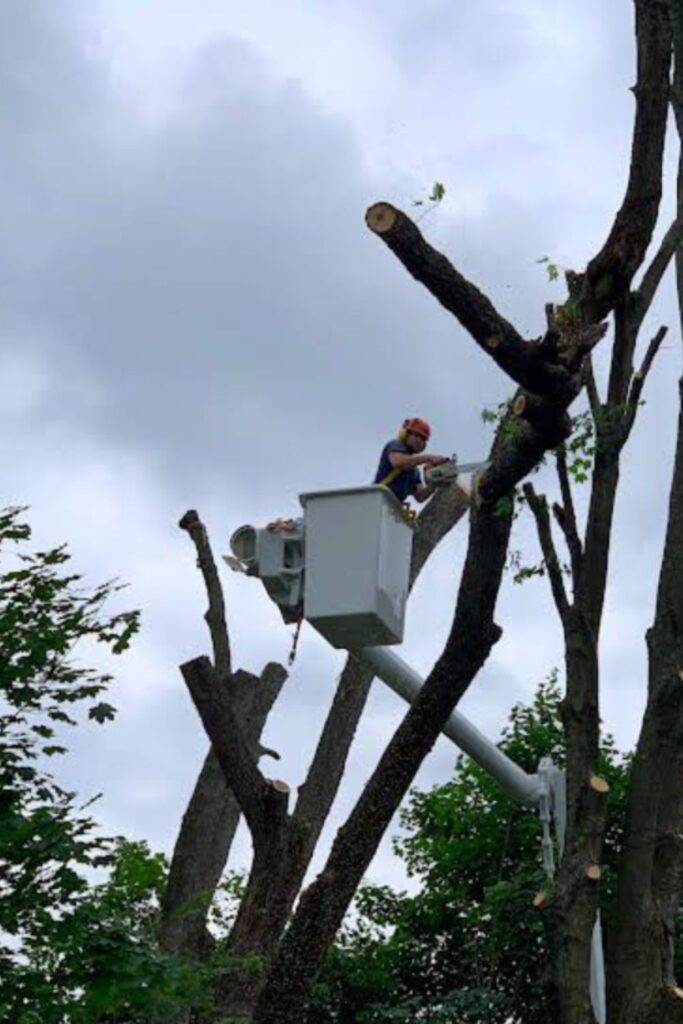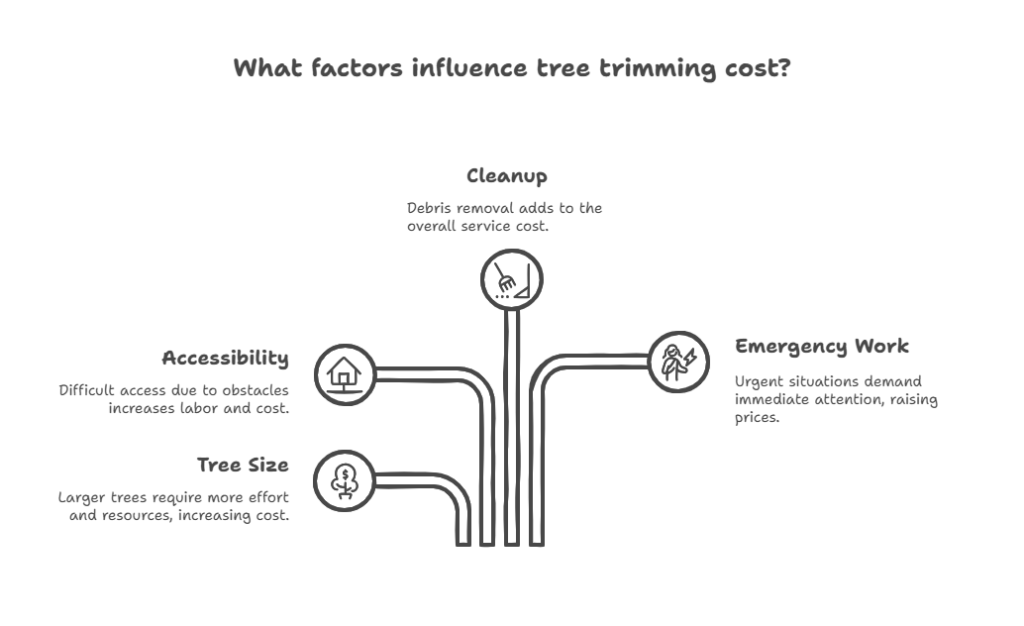Alright, here’s the deal. Tree trimming isn’t something you just “get around to eventually.” It affects your home’s safety, curb appeal, and even your property value. And yeah, it costs money, and that cost isn’t one-size-fits-all. There are a bunch of reasons why it might cost $150 or $1,500. That’s a big gap, I know. I’ll explain why.
Let’s go over what impacts the cost, when you should trim, how it’s done right, what to avoid, and what happens if you try to cut corners or ignore the problem. This isn’t a sales pitch. Just real talk from someone who’s done this for decades.

Why Tree Trimming Cost Matters
You’re not just paying to cut some branches. You’re paying for:
- Safety: Weak or overgrown limbs can fall and cause serious damage. That’s not drama, it’s reality, especially after storms or in high-wind areas like Overland Park.
- Tree Health: A clean trim lets a tree grow stronger. Less disease, better shape.
- Property Looks: Overgrown trees kill curb appeal. And buyers do notice.
- Insurance Risk: Neglected trees can void parts of your homeowner’s policy if damage happens.

So yeah, trimming matters. It’s not just maintenance, it’s prevention.
What Does Tree Trimming Cost?
This depends on a few solid, measurable things:
- Size of the tree: The bigger it is, the more it costs. An average small tree (under 30 feet) might run you $150–$400. A medium tree (30–60 feet) goes from $400–800. Larger ones (60+ feet) can easily go over $1,000.
- Accessibility: Got a tree next to power lines, fences, or over a roof? That takes more time and careful rigging. Expect a higher quote.
- Cleanup: Want all the debris hauled away? That’s included with good pros like us, but some guys charge extra. Always ask.
- Emergency work: If a limb is dangling after a storm, and it’s urgent? Prices go up. That’s normal. It’s dangerous, fast-turnaround work.

There’s no universal price tag. But most homeowners in Overland Park pay anywhere from $250–$700 per trim job. That’s a real-world ballpark, not made-up numbers.
When to Trim Your Trees
Short answer: before it’s too late.
Here’s a better answer:
- Late winter to early spring is best. Trees are dormant, easier to shape, and wounds heal faster before growth starts.
- If a branch is dead, cracked, or leaning weirdly, trim now. Don’t wait for the “right” month.
- If it’s blocking sunlight, touching power lines, brushing your roof, or growing toward your house, it’s time.
We’ve trimmed in every season. But don’t wait for “perfect timing” if your tree’s becoming a problem.
How We Do It (and What You’re Paying For)
People think it’s just a guy with a chainsaw and a ladder. It’s not.
Here’s what happens behind the scenes:
- Assessment: We check the tree’s health, shape, and surroundings.
- Climb or lift work: We use ropes, harnesses, or lifts depending on the height and structure. This isn’t just hop-up-and-cut stuff.
- Strategic cutting: We remove dead, damaged, or crowded limbs, without wrecking the tree’s structure. That’s key. Random chopping = long-term damage.
- Shaping (if needed): A good trim keeps the tree looking natural, not butchered.
- Debris cleanup: We don’t leave a mess. Wood chips or branches we haul it.
You’re not just paying for tools. You’re paying for trained people who know how not to kill your tree while keeping your home safe.
Common Mistakes People Make
Here’s where people mess up:
- DIY with no clue: We’ve seen folks on ladders with dull saws, hacking limbs off the wrong way. One wrong cut and you’re either injured or you’ve damaged your tree for life.
- Hiring cheap “trimmers”: You’ll see guys with a pickup truck and no insurance offering $100 trims. You get what you pay for. No permits. No training. Liability is on you if they fall or break something.
- Topping trees: This is when someone slices the top off. It’s bad. Makes trees unstable and prone to disease. Don’t let anyone “top” your tree. It’s lazy and dangerous.
- Ignoring warning signs: Hanging limbs, dying branches, fungus near the base people ignore all that until something breaks.
What Happens If You Don’t Trim
This part’s real. We’ve seen it:
- Branches fall on cars, roofs, and fences. That’s thousands in damage.
- Insects and disease take over. Dead limbs attract pests, rot, and spread fast.
- The tree grows lopsided or weak. Eventually, it needs full removal, which costs way more.
- Powerline contact: Not only dangerous, but also fines or utility shutoffs.
- Insurance claims denied: If a tree damages your property and they find out it was “neglected,” some policies won’t cover it.
Skipping regular trims is one of those “pay now or pay way more later” situations.
Final Thoughts from Me (Jose)
I’ve been doing this for 10 years. Tree trimming isn’t glamorous, but it’s essential. You don’t need the most expensive contractor out there, but you do need someone licensed, insured, and experienced. We do this work the right way. It’s not just about cutting branches, it’s about keeping your property safe and your trees strong for the long haul.
If you’re in Overland Park and want a real, honest quote, not a slick sales pitch, call KC Omar Tree Services.
Jose Maldonado
Owner, KC Omar Tree Services
Located: 5421 E 16th Terrace, Kansas City, MO 64127, United States
Phone: +18162177668
